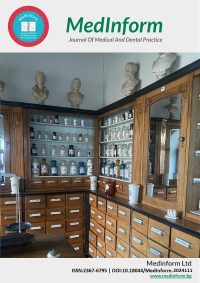Issue One 2024
2024, Vol. 11, issue 1, (January)
Literature Review
Endodontic infections and Helicobacter pylori
Abstract:
More than 500 bacterial species are found in endodontic infections. There is great variety in the species composition, diversity and quantity of microorganisms. In the presence of endodontic infection, the pulp tissue becomes favorable for the survival of bacteria that reside both permanently and transiently in the oral cavity. Thus, an opportunity is found for some important human pathogens to be able to colonize in the infected dental pulp.
- pylori is primarily transmitted by the oral-oral and fecal-oral routes. The oral cavity is a major extragastric reservoir of the microbe. Thе oral Helicobacter pylori may contribute to the progression of periodontal diseases and have been associated with various oral diseases, failed eradication from the stomach and re-infection.
Multiple studies demonstrate the successful isolation of H. pylori from root canals of teeth. There are reports of widespread H. pylori in primary endodontic infection. It has been suggested that the anatomy of permanent teeth favors colonization by this microorganism, assuming the possibility that the microbes were introduced by food, water, or casual contact. Often in root canals, H. pylori has a coccoid form. Dental pulp may be a possible source of Helicobacter pylori infection in children.
Studies have found that H. pylori colonizes inflamed pulp in approximately 40% of all cases by adhesion to human dental fibroblast cells. Periapical lesions with the largest surface area showed higher numbers of gram-negative and rod-shaped species.
Further studies are needed to clarify the role of oral H. Pylori. Its presence in all parts of the oral cavity, including the endodontium, is undisputed, but its role in the course of endodontic infection has not been clarified yet. Its presence in infected root canals could serve as a reservoir for further infections and re-infections.
Keywords: endodontic infections, Helicobacter pylori, reservoir, re-infection

